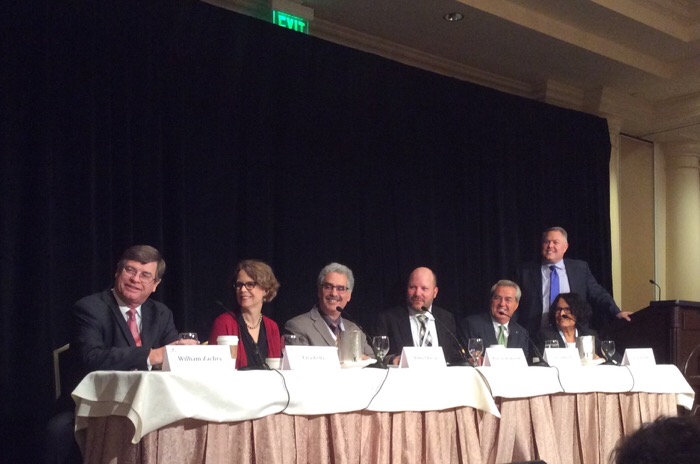Workers’ Comp: The Good, The Bad & The Ugly
Stakeholders joined forces at the 2016 California Workers’ Compensation & Risk Conference to candidly discuss current workers’ compensation successes and challenges.
Panelists included:
- Christine Baker, Director, California Department of Industrial Relations
- Lisa Kelly, Senior Manager – Workers’ Compensation, Boeing
- William Zachry (Retired), Albertsons/Safeway and Board Member of the California State Compensation Insurance Fund & Self Insured Security Fund
- David North, CEO, Sedgwick
- Dr. Roman Kownacki, Medical Director, Regional Occupational Health, The Permanente Medical Group, Inc.
- Robert G. Rassp, Esq., Author
- Mark Walls, Vice President Communications & Strategic Analysis, Safety National (moderator)
What are some of the things we do well in workers’ compensation?
North: That’s a hard question because you want to talk about the processes that are going well, however, somebody has to get hurt for us to prove that we’re doing well. I think we are delivering the benefits that the law intends, but I think we also have to look at getting the injured worker what they need medically from our healthcare system and that’s become a national issue.
Kownacki: We do a great job on catastrophic injuries. Some of these things are taken for granted that we do well in workers’ comp that people do not get on the group health side.
Rassp: From a claimant attorney standpoint, I see too much of a variation between employers. There’s one thing I see consistently from workers – that they want to get back to work. Motivation is the difference between impairment and disability.
Kelly: Injury rates have been declining for decades. That results from our safety professionals helping employees to avoid injury altogether. Employers are also implementing wellness programs and recognize that the success of their businesses is through a healthy workforce, so they are making investments in that.
Zachary: As an industry, we have done a good job at giving opportunities to women and minorities. White males will soon become the minority in the industry in California, for example. This is important to reflect the people we serve.
How can workers’ compensation improve?
Baker: Reducing the costs, eliminating fraud, improving communication with workers and getting them back to work faster. I also don’t understand why we have two systems between group health and workers’ compensation. Why does someone with a broken leg heal faster on the group health side versus the workers’ compensation side?
Kownacki: The medical delivery model does a great job for 90% of workers out there, it’s the 10% we all struggle with. I think it starts with how we communicate to injured workers. They need us to translate complicated forms, can’t get ahold of their adjusters and the medical profession often misleads the injured worker to believing that we will cure their pain. We need to have more honest conversations about restoring function versus reducing pain.
Kelly: I think the evolving health model is something we have to look at as employers. We lose a lot of time and resources on that small group of employees who aren’t getting better and back to work. One healthcare system would make it easier. We are one of the first employers to have accountable care organizations where we are trying to align the employer’s interests with the employee’s interest.
Raasp: I have been an advocate of 24-hour care for years. We need one system. The differences between patient-centered treatment and an evidence-based system is night and day.
North: Part of what we battle every day is that we want to deliver good quality healthcare to injured workers who are legitimately hurt in a reasonable way. The problem is that, in workers’ comp, we want to regulate that. Even with the best intentions, that takes a lot of time, so we end up with a lag in the statutory structure and that affects care. The process is not aligned with our desired outcomes.
Zachary: The magic word is “incentives” and, if you have them lined up, you’ll get the outcomes you desire. We also haven’t figured out permanent disability completely and are having problems as a result. How do we fairly and appropriately take care of people of legitimately have a permanent disability? That’s a huge challenge. A final issue is the communication process. Most people who get an attorney because their front-line supervisor never talked to them after the injury. We have to urge managers to talk to their injured workers and encourgage them to get better and return to work. They need to feel like the employer is an advocate.


